How to Write an Estimate in 5 Steps: A Small Business Guide

Providing a professional-looking estimate is key to winning jobs and forging lasting relationships with your customers. A good estimate helps potential clients understand the total cost of a project and the expected timeline. It also lets you assess your work-to-profit ratio so you can determine which projects you want to take on.
This step-by-step guide will walk you through the process of creating an estimate. Once you and your client are satisfied, you can use accounting software to easily convert estimates into invoices at the end of the project.
Key Takeaways
- Before you write an estimate, make sure you and your client have a clear understanding of project expectations
- Remember to include a timeline, subcontractors, and material costs in your estimate
- Exploring competitor rates and service breakdowns can help you build your estimate template
- Estimate software offers clear templates and invoice conversion to make your estimating process easy
Table of Contents
- Steps to Write an Estimate
- Utilizing Estimation Software for Writing Accurate Estimates
- What Is an Example of an Estimate?
- Conclusion
- Frequently Asked Questions
Steps to Write an Estimate
1. Review the Project Scope
Don’t start writing your estimate until you understand what your client wants. Often, clients don’t know exactly what they want, in which case you’ll need to ask the right questions.
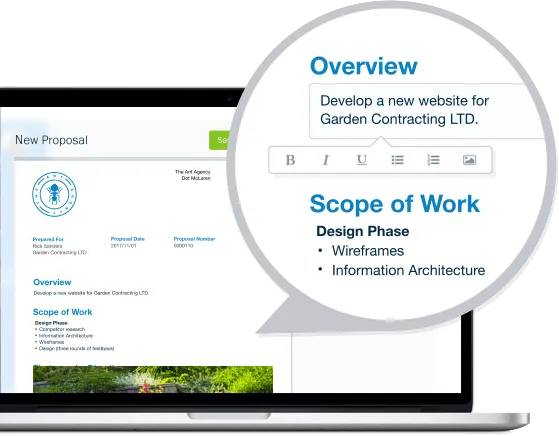
Here are some questions to ask your client:
- What services do you require?
- What services do you not require?
- What’s your expected completion date?
- What expectations do you have for this project?
- Do you want to see a complete breakdown of costs?
- Do you want to see an itemized breakdown of services?
Some clients may not know all the details of a job and can only tell you what the final result should be. In this case, you’ll need to make suggestions. If you’re a contractor, visit the job site to fully understand the project.
An initial discussion is also a great relationship builder with your client. You’ll make sure you’re both on the same page and eliminate any surprises down the road that could hurt your working relationship.

2. Estimate a Timeline
An estimate only needs an approximate timeline. But it’s important to provide a rough completion date both for your client’s sake and so you know how much to charge based on how much time it’ll take you.
With that in mind, stay on the conservative side when providing a timeline. It’s important to manage client expectations so they know exactly how much time you need to complete the project and prevent disputes later. Don’t lowball the completion date.
You should also mention any possible factors that could delay your project. For example, a contractor should mention possible delays and red tape with obtaining permits.
You should also keep in mind other projects you plan to take on and if the timeline will interfere with their completion.
3. Price Out Subcontractors
Big jobs may require subcontractors, especially if you normally work alone rather than with a team. Be realistic about what you can and can’t do. For example, a website designer may need to hire a copywriter to write copy such as blog posts, the about page, and more.
The client might also ask for the project to be completed extra quickly. For example, a client asks a painter to paint her entire first floor in a day in preparation for a party. Normally, this would take the painter a week on his own. So he must hire a team so he can complete the job on time.
Hiring subcontractors might also be best if you’re swamped with additional projects. That way, you can meet the deadline without burning out. These labor costs must be included in the total cost so you can provide a potential client with the most accurate estimate.
4. Estimate Material Costs
Don’t have the materials you need to complete a job? Research how much they’ll cost and include that in your estimate. You may be able to rent items like tools instead of buying them. Some items may be used on multiple jobs. Instead of charging them to the customer, write them off on your taxes instead.
- For example, a graphic designer who needs to buy a new computer will write that item off on their taxes, not charge the computer to their new client. Be clear in your estimate about any payment terms.
Looking at costs also helps you figure out if the project is even worth taking on in the first place. If the total cost is going to be more than the revenue, you should decline the project.
You’ll also need to look at your cash flow. Do you have enough money to pay for materials before you’re reimbursed? If not, consider your funding options and avoid high-interest bank loans.
5. Check out the Competition
Do some research and find what your competition is charging for similar projects. Join a trade organization or check listings from your competitors. Here’s a list of U.S. trade organizations.
You don’t want to price too high, nor do you want your pricing to be so low you won’t profit.
Plus, charging too little may make potential clients suspicious. Find out the ballpark range the competition charges. You’re a professional and you should charge what other professionals charge. Payscale is one place to do research.
Still, fees vary according to experience level. Compare your prices to other experienced professionals if you have many years in the business. If this is your first year in business, compare yourself to other new businesses.
Fair estimates and great work will keep your clients coming back, but it’s a strong proposal that helps win them first. FreshBooks’ proposal software supports you as you draft winning proposals quickly and easily. Click here to try it free and start creating great proposals today.
Utilizing Estimation Software for Writing Accurate Estimates
FreshBooks’ estimating software offers everything you need to create a professional estimate quickly and easily. Straightforward templates help you outline a project’s timeline and record elements like material costs and labor. Once you’re satisfied with the estimate, share it online with your client and convert it into an invoice at the end of the job.
Click here to try it free and discover how estimating software can make your estimating process easier than ever.
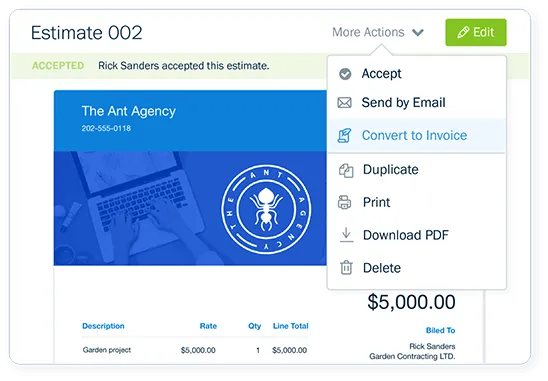
What Is an Example of an Estimate?
Below is an example of an estimate created with FreshBooks.
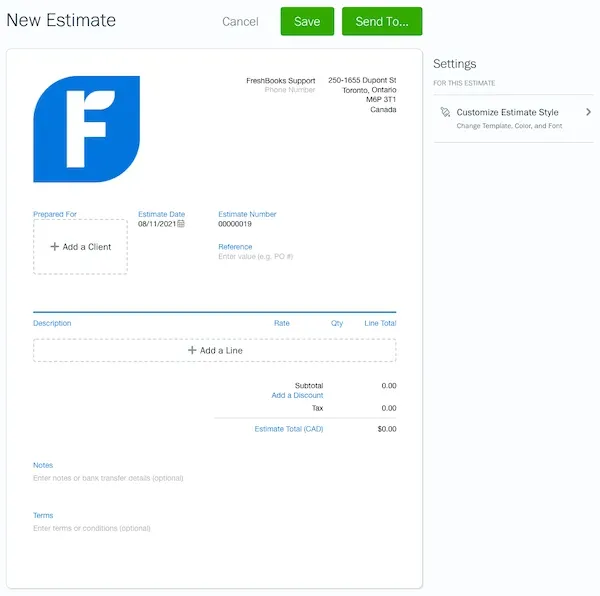
This is a basic estimate but has all the components an estimate needs.
These components include:
- Services to be provided
- Costs
- Supplier and client names and details
- Date of issue
- Estimate number
- Company contact info

You should also consider adding:
- Project scope (what it includes)
- Exclusions (what the project doesn’t include)
- Timeline
- Completion date
- Payment terms and conditions
Conclusion
Creating an accurate job estimate helps both you and your potential customers budget for a project. A good estimate should outline the scope and timeline for a contract and include any subcontractors and materials costs you might need.
Before you write an estimate, talk to your client about their expectations and budget. It can also be helpful to explore competitor rates so you have a sense of typical industry prices. When you want an easy system for creating estimates and converting them to invoices, estimating software like Freshbooks helps you write clear and concise online estimates.
FAQs on How to Make an Estimate
What Are Some Free Construction Cost Estimators?
Doing your own estimating from scratch is labor-intensive. Save some time by using a free construction cost estimator.
Here are some free tools:
- Easy-Pro Builders Estimator: It has different worksheets for different trades and automatically calculates labor and materials costs and taxes (by country). It’s a great option for small businesses.
- All-In-One Calculator Free: This free Android app helps you do construction-related calculations.
- Building Calculator: This free app works on all devices and assists in calculating the amount of materials you’ll need for a project.
- If you want to learn more about construction estimates, follow our guide on How to Estimate Construction Jobs. It will provide a step-by-step walkthrough of the process.
What are the five 5 main stages of an estimate?
You can create estimates easily by breaking the process down into 5 steps:
- Review the scope of the project and talk to your client about expectations
- Draft an approximate timeline
- Price out any subcontractors if you need additional labor
- Calculate your materials costs and business expenses
- Compare your rates against competitors
What are the 3 main types of estimates?
Job estimates can be broken down into three types: ballpark, flexible, and detailed. A ballpark estimate is the first estimate and covers a general idea of costs. A flexible estimate discusses different elements the client might seek, while a detailed estimate has more finalized requests and covers the specifics of your materials and labor.
How do you itemize an estimate?
An itemized estimate breaks down your costs into line items. This means that on your estimate sheet, each line will include the price of a specific material or service so your client understands exactly what they’re paying for.
What is the best estimation technique?
The best estimation technique will depend on your industry, but one of the most generally popular techniques is a work breakdown structure. This divides a project into components and prices out each component, then adds them for a final cost.
Reviewed by
Michelle Alexander is a CPA and implementation consultant for Artificial Intelligence-powered financial risk discovery technology. She has a Master's of Professional Accounting from the University of Saskatchewan, and has worked in external audit compliance and various finance roles for Government and Big 4. In her spare time you’ll find her traveling the world, shopping for antique jewelry, and painting watercolour floral arrangements.
RELATED ARTICLES



 5 Simple Steps to Making Successful Bids: Tips for Small Businesses
5 Simple Steps to Making Successful Bids: Tips for Small Businesses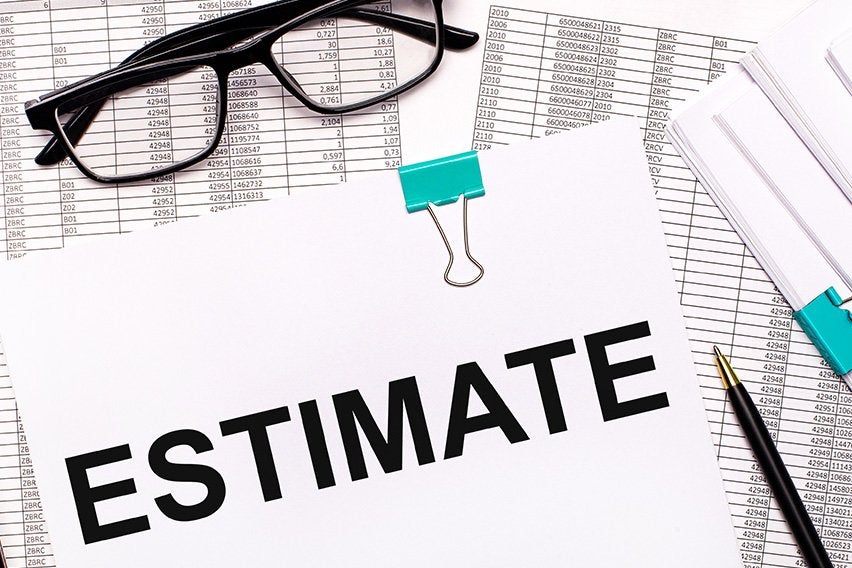 How to Estimate Projects: Top 5 Project Estimation Techniques for Small Businesses
How to Estimate Projects: Top 5 Project Estimation Techniques for Small Businesses Free Estimates: When a Contractor Should Offer Them (And When to Charge a Fee)
Free Estimates: When a Contractor Should Offer Them (And When to Charge a Fee) Is A Quote A Contract: A Primer for Small Businesses
Is A Quote A Contract: A Primer for Small Businesses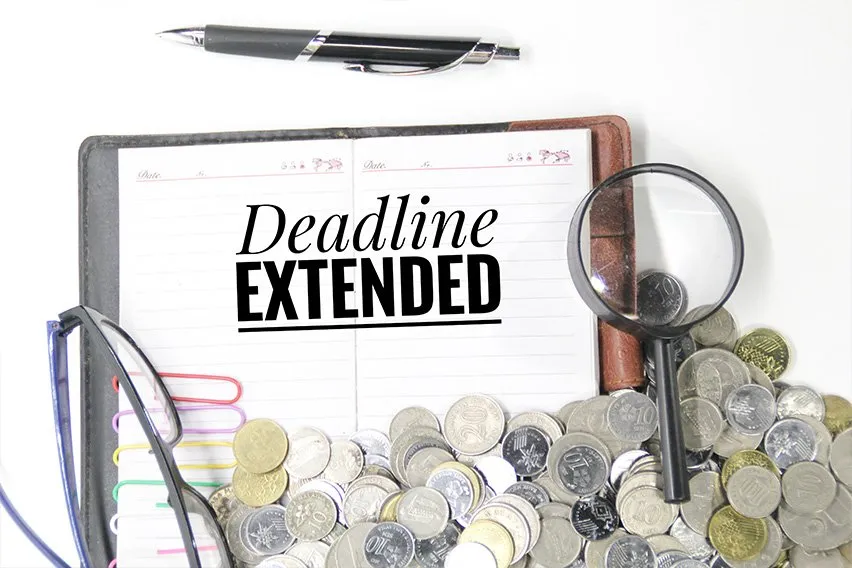 5 Reasons Why It’s Important for Small Businesses to Use Estimates
5 Reasons Why It’s Important for Small Businesses to Use Estimates The 4 Key Types of Estimates: A Guide for Trades and Home Services
The 4 Key Types of Estimates: A Guide for Trades and Home Services